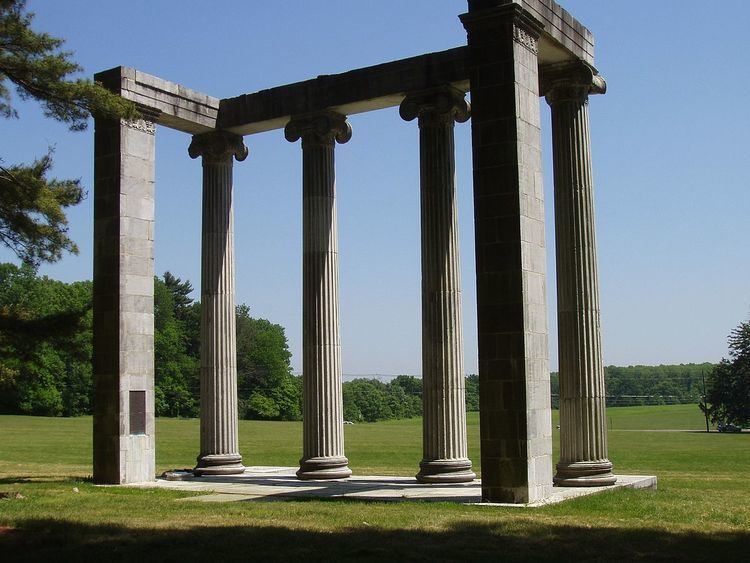NJRHP # 1751, 1752, 1753 Area 2.756 km² Added to NRHP 15 October 1966 | NRHP Reference # 66000466 Designated NHL January 20, 1961 Phone +1 609-921-0074 | |
 | ||
Designated NJRHP May 27, 1971; May 12, 1972; April 10, 1989 Address 500 Mercer Rd, Princeton, NJ 08540, USA Similar Princeton Battle Monument, Morven, Delaware and Raritan C, Princeton University Chapel, Princeton University Art Muse | ||
Princeton battlefield tour in real time
The Princeton Battlefield in Princeton, Mercer County, New Jersey, United States, is where American and British troops fought each other on January 3, 1777 in the Battle of Princeton during the American Revolutionary War. The battle ended when the British soldiers in Nassau Hall surrendered. This success, shortly after Washington's crossing of the Delaware River and capturing the troops at the Old Barracks in Trenton, helped improve American morale.
Contents
- Princeton battlefield tour in real time
- Princeton battlefield from above
- Princeton Battlefield State Park
- Clarke House Museum
- Princeton Battlefield Stony Brook Village Historic District
- References
Part of the battlefield is now a state park, while other portions remain under threat of development. For several years, the Institute for Advanced Study has been attempting to build faculty housing on the portion of Princeton Battlefield known as Maxwell's field. The Princeton Battlefield Society is protesting the project in court, and national and local preservation organizations are working to prevent construction on the property. The Civil War Trust, based in Washington, D.C., has offered to purchase the land for $4.5 million, more than $1 million above the site's appraised value.
Princeton battlefield from above
Princeton Battlefield State Park
Princeton Battlefield State Park is a 681-acre (276 ha) state park located in Princeton. The park preserves part of the site of the Battle of Princeton (January 3, 1777), which was a victory for General George Washington's revolutionary forces over British forces. The park is maintained by the New Jersey Division of Parks and Forestry, and is located on Mercer Road (Princeton Pike), about 1.5 miles south of Princeton University and 3.8 miles north of Interstate 295/95.
Highlights of the park include the Princeton Battlefield site; the Clarke House Museum; the site of the Mercer Oak, a tree which stood in the middle of the battlefield until recent years; the Ionic Colonnade designed by Thomas U. Walter (fourth Architect of the U.S. Capitol); and a stone patio marking the grave of 21 British and 15 American soldiers killed in the battle. A poem was written for the site by Alfred Noyes, Poet Laureate of England.
The park's hiking trails lead to the Delaware and Raritan Canal and to the 588-acre (2 km2) adjacent property of the Institute for Advanced Study.
The Princeton Battle Monument is located in town near Princeton University on non-adjacent park property at Stockton Street and Bayard Lane.
Clarke House Museum
The Thomas Clarke House Museum was built in 1772 by the third generation of Quakers at Stony Brook. The house is furnished in the Revolutionary period and contains military artifacts and battle exhibits, as well as a research library.
During the battle Hugh Mercer was brought to the Clarke House and treated unsuccessfully by Benjamin Rush.
Princeton Battlefield / Stony Brook Village Historic District
In 1989 the National Register of Historic Places designation of the Battlefield was expanded to form the Princeton Battlefield / Stony Brook Village Historic District. Princeton's original settlers were Quaker farmers along the Stony Brook immediately to the south and west of the battlefield. The Stony Brook Meeting House and Cemetery was well established at the time of the revolution and in full sight of the battle. The meetinghouse and associated farms are part of the contiguous preserved area that includes the battlefield.
